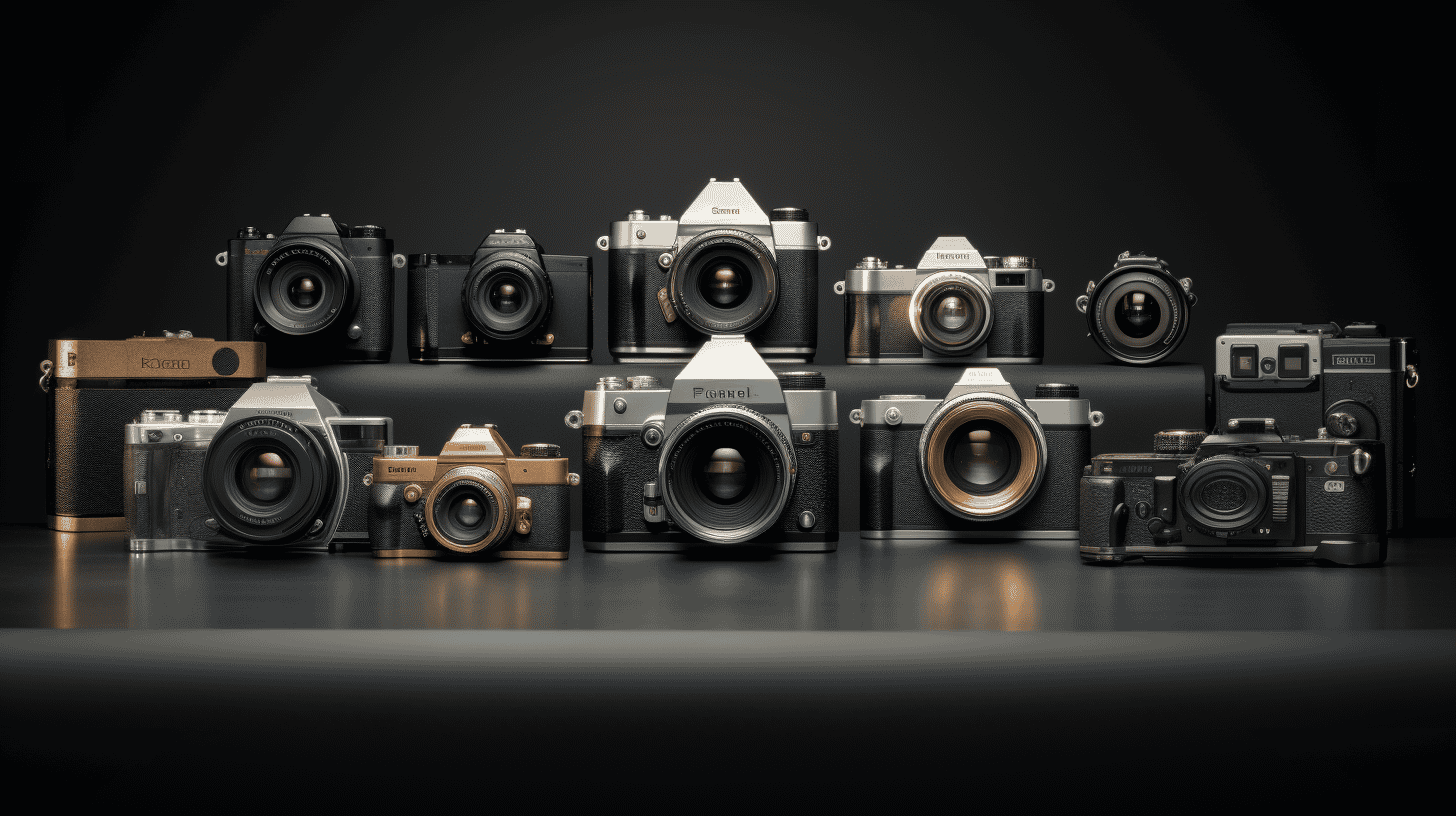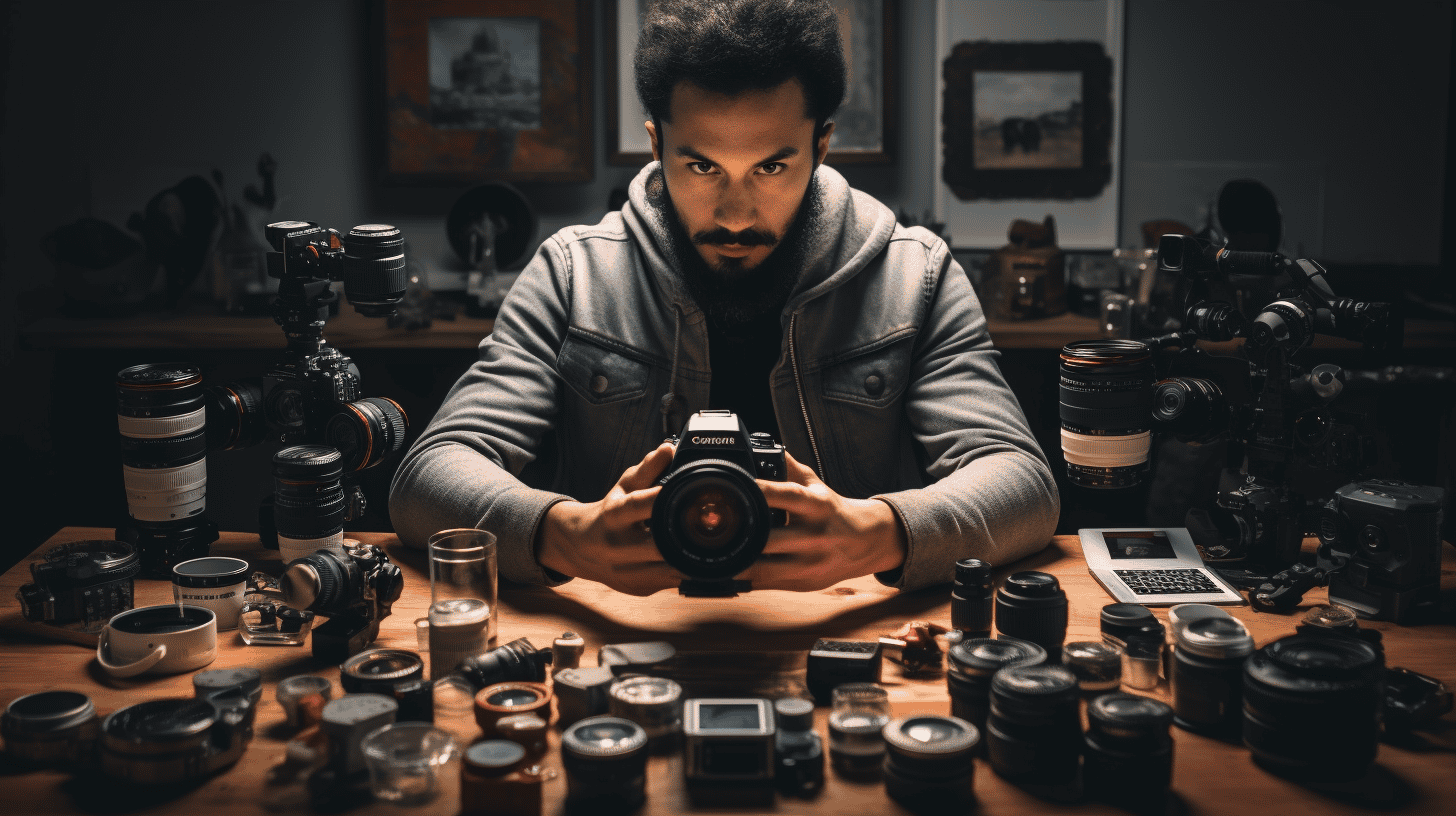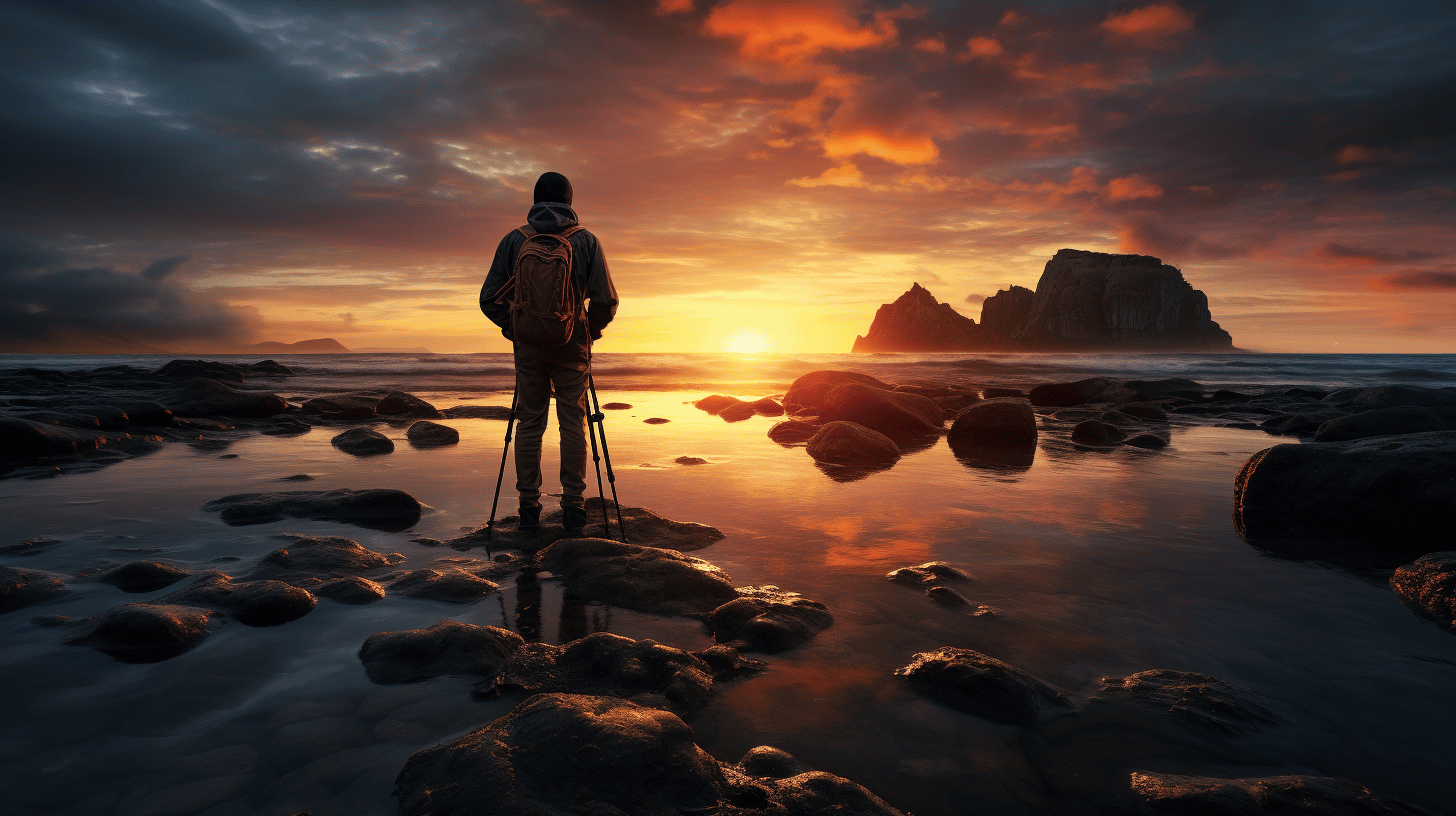In today’s digital age, photography has become more accessible than ever before. With the rise of smartphones equipped with high-resolution cameras, almost everyone has a portable device capable of capturing stunning images. However, many amateur photographers find themselves debating between using a smartphone or investing in a dedicated DSLR (digital single-lens reflex) camera. Whether you’re an aspiring photographer or just looking to up your photography game, it’s important to understand the pros and cons of each option before making a decision.
Photography is a form of self-expression that captures moments, emotions, and beautiful landscapes. It allows us to freeze time and preserve memories in the most visually appealing way possible. With innovations in technology, smartphones have revolutionized the way we take photos. The convenience of having a high-quality camera in our pockets, combined with the ease of instantly sharing images on social media platforms, has made smartphones the go-to choice for many.
On the other hand, DSLR cameras are known for their versatility, professional-level image quality, and manual controls. They offer a range of interchangeable lenses, allowing photographers to achieve various effects and capture stunning details. However, DSLRs come with a higher price tag and can be bulky to carry around, which may deter amateur photographers who value portability and convenience.
To help you make an informed decision, this article delves into the world of smartphone photography and DSLR cameras. We will explore the current photography trends, examine the advantages and disadvantages of both options, and discuss how each excels in specific types of photography. Additionally, we will explore the role of mirrorless cameras, a newer category of cameras that combine the best of both worlds.
So, whether you’re standing at a scenic overlook or capturing candid moments with friends, join us as we explore the age-old question: smartphone or DSLR – What’s best for an amateur photographer? Let’s dive in!
Current Photography Trends
The world of photography is constantly evolving, with new trends emerging and reshaping the way we capture moments. In today’s digital age, the rise of smartphones has revolutionized the way people take photos. Let’s explore some of the current photography trends that are shaping the industry.
Smartphone Dominance in Photography
Smartphones have become the go-to device for capturing memories, thanks to their convenience and ever-improving camera capabilities. In fact, smartphones now account for a staggering 92.5% of all pictures taken worldwide[1]. With their always-on-hand nature, high-resolution lenses, and advanced image processing algorithms, it’s no wonder that people are leaving their bulky point-and-shoot cameras behind in favor of their trusty smartphones.
The Diminishing Point-and-Shoot Market
As smartphone technology continues to advance, the market for traditional point-and-shoot cameras is dwindling. These compact cameras, which were once widely popular, are being overshadowed by the convenience and quality offered by smartphone cameras. As a result, sales of point-and-shoot cameras have been declining steadily in recent years[2].
Expected Smartphone Improvements by 2024
Smartphone photography is not showing any signs of slowing down. In fact, it is expected that the quality of smartphone images will surpass that of DSLRs (Digital Single-Lens Reflex) by 2024. With advancements in sensor technology, optics, and computational photography, smartphones are becoming more capable of producing professional-grade photos[3]. This disruptive trend highlights the ever-increasing power and innovation of smartphone cameras.
To stay updated with the latest advancements in camera technology, photographers need to keep a close eye on the evolving smartphone landscape. From sensor improvements to software updates, staying abreast of these developments can provide valuable insights and inspiration for capturing outstanding images. For more information on the latest camera technology, check out this comprehensive guide on staying updated[4].
So, whether you’re a professional photographer or an amateur enthusiast, it’s clear that smartphones are at the forefront of the photography industry. Embracing these trends and harnessing the power of your smartphone camera can help you capture stunning photos that tell a story and captivate your audience.
Comparative Analysis: Smartphones vs DSLRs
When it comes to capturing moments and creating lasting memories, smartphones and DSLR cameras are often the go-to choices. Both devices have their strengths and are equipped with powerful features that cater to different photography needs. In this comparative analysis, we will delve into various aspects to help you understand the key differences between smartphones and DSLRs. Whether you’re a photography enthusiast or someone looking to capture high-quality images, this analysis will assist you in making an informed decision.
Sensor Size and Image Quality
The size of the image sensor significantly influences the image quality, with DSLRs having larger sensors than smartphones[1]. Larger sensors allow for better light capture and enhanced dynamic range, resulting in sharper and more detailed images. When it comes to producing professional-quality photographs, DSLRs have the upper hand in delivering stunning clarity and depth.
Utility in Low-Light Conditions
One area where DSLRs outperform smartphones is their utility in low-light conditions. With larger sensors and superior ISO performance, DSLRs can capture images with minimal noise and better clarity even in dimly lit environments[2]. Whether you’re photographing a night landscape or an indoor event, DSLRs are designed to excel in challenging lighting situations.
Bokeh Effects and Detail
For those interested in creating stunning bokeh effects and capturing intricate details, DSLRs are the preferred choice. The ability to use interchangeable lenses and adjust aperture settings allows photographers to control depth of field and create a beautiful background blur. This level of control over bokeh effects and detail is unmatched by smartphone cameras[2].
Speed and Viewing Ability
One advantage that DSLRs offer over smartphones is their speed and viewing ability. DSLRs turn on faster, allowing photographers to capture fleeting moments without any delay. Furthermore, thanks to the optical viewfinder, DSLR users can see through the lens in real-time, providing a more accurate representation of the final image, even when the camera is off[3]. This feature is particularly beneficial in situations where quick reaction time is crucial.
Versatility and Manual Control
While smartphones are convenient and portable for everyday photography, they lack the versatility of interchangeable lenses and manual controls that DSLRs provide. DSLR cameras allow photographers to experiment with different focal lengths, macro photography, and wide-angle shots by simply swapping lenses. The ability to control shutter speed, aperture, and ISO settings gives photographers full creative control, resulting in stunning and unique images[4].
Investment and Bulkiness
It’s important to consider the investment and bulkiness associated with DSLR cameras. DSLRs generally require a higher initial investment not only for the camera body but also for lenses and accessories. Additionally, DSLR cameras tend to be bulkier than smartphones, making them less portable. However, the investment in a DSLR can be seen as a long-term investment in honing your photography skills and producing high-quality images[5].
In conclusion, while smartphones have revolutionized the way we capture and share images, DSLRs still hold a significant advantage when it comes to image quality, low-light performance, bokeh effects, speed, versatility, and manual control. If you’re passionate about photography or require professional-grade images, investing in a DSLR may be the right choice for you[6].
Choosing the Right Camera Equipment offers a comprehensive guide for photography enthusiasts to help you make an informed decision about selecting the right camera equipment. Whether you’re a beginner or an advanced user, this guide provides valuable insights to aid you in choosing the perfect tool to capture your vision.
Excellence in Specific Types of Photography
When it comes to photography, different cameras excel in different types of photography. Understanding which camera performs best in specific scenarios can significantly enhance the quality of your photographs. In this section, we will explore three specific types of photography and the cameras that excel in each category: landscape photography, video recording in low-light conditions, and portrait photography.
Landscape Photography
Landscape photography aims to capture the beauty and grandeur of nature. Whether you’re capturing majestic mountains, serene lakes, or breathtaking sunsets, it’s essential to have a camera that can accurately represent the colors and details of the landscape.
Smartphone cameras have made impressive strides in recent years and have become a popular choice for landscape photography. They offer accurate color sensors and light meters, allowing you to capture stunning landscapes with vibrant hues and sharp details. The convenience of having a high-quality camera right in your pocket makes smartphone photography a favorite among amateur and professional photographers alike.
Video Recording in Low-light Conditions
Recording videos in low-light conditions can be challenging. It requires a camera that can handle low-light situations and still produce high-quality footage with minimal noise and graininess. This is where DSLRs shine.
DSLRs, with their larger image sensors and adjustable ISO settings, are ideal for capturing videos in low-light conditions. These cameras can capture more light, resulting in brighter and clearer footage even in challenging lighting situations. With the ability to change lenses and adjust settings manually, DSLRs offer more flexibility and control in capturing videos in low-light conditions.
Portrait Photography
Portrait photography is all about capturing the essence, personality, and emotions of the subject. Whether you’re photographing individuals, couples, or families, it’s crucial to have a camera that can capture facial expressions with precision and produce stunning portraits.
While smartphone cameras have improved in portrait photography, DSLRs still offer more control and better results. DSLRs allow for adjusting aperture, depth of field, and focal length, enabling you to create a beautiful bokeh effect that blurs the background and brings focus to the subject. DSLRs also offer more options for lenses, including prime lenses, which are renowned for their sharpness and ability to capture fine details.
If you’re looking to take your portrait photography to the next level, you may want to consider learning the art of portrait photography techniques. Art of Portrait Photography is a comprehensive resource that can provide you with valuable insights and techniques for capturing stunning portraits.
Remember, while smartphones are convenient and capable of capturing impressive images, DSLRs still offer more control and better results in specific types of photography, such as landscape photography, low-light video recording, and portrait photography. So, when choosing a camera, consider the specific type of photography you’ll be focusing on and select the camera that best suits your needs.
Role of Mirrorless Cameras
Mirrorless cameras have quickly gained popularity among photographers of all levels. These compact and lightweight cameras offer a wide range of benefits, making them an excellent choice for both beginners and professionals. In this section, we will explore the role of mirrorless cameras and what sets them apart from traditional DSLRs.
Ease of Use
One of the key advantages of mirrorless cameras is their ease of use. With their compact size and intuitive controls, they are much more user-friendly than bulky DSLRs. Whether you’re a beginner learning the basics or an experienced photographer on the go, a mirrorless camera allows you to quickly and easily capture the moment without the hassle of complicated settings or heavy equipment.
Improvement over Smartphone Capabilities
While smartphone cameras continue to improve, they still have limitations when it comes to image quality and versatile shooting options. Mirrorless cameras bridge this gap by offering superior image quality, interchangeable lenses, and advanced features such as full manual control, RAW shooting, and image stabilization. Whether you’re capturing landscapes, portraits, or fast-moving subjects, a mirrorless camera provides the flexibility and control you need to take your photography to the next level.
Providing Better Photos
Mirrorless cameras are recommended for their ability to deliver better photos compared to smartphones. With larger image sensors, they capture more detail and have superior low-light performance. The ability to use different lenses further enhances their versatility, allowing photographers to achieve their desired creative vision. Furthermore, mirrorless cameras often feature advanced autofocus systems and high-speed continuous shooting, making them ideal for capturing action or fast-paced events. Whether you’re a hobbyist or a professional, a mirrorless camera is a good choice for anyone looking to improve their photography skills beyond smartphones.
In summary, mirrorless cameras play a significant role in the photography world by offering ease of use, improved capabilities over smartphones, and the ability to capture better photos. Whether you’re a beginner or an experienced photographer, investing in a mirrorless camera can open up a world of creative possibilities and elevate your photography to new heights.
Conclusion
In conclusion, when it comes to choosing between a smartphone and a DSLR camera for amateur photography, there are several factors to consider. While smartphones have made significant advancements in terms of image quality and convenience, DSLRs still offer distinct advantages in terms of image control, versatility, and overall image quality.
For beginners who are just starting out and want a hassle-free photography experience, a smartphone may be a suitable choice due to its compact size, ease of use, and the ability to instantly share photos on social media. However, if you are serious about photography and desire more creative control over your images, investing in a DSLR camera is highly recommended.
A DSLR camera with its larger sensor size allows for better image quality, especially in low-light conditions, where smartphones often struggle. Additionally, the ability to achieve bokeh effects and capture finer details in your images sets DSLRs apart from smartphones.
DSLRs also excel in terms of speed and viewing ability, allowing you to capture fast-moving subjects and have a more responsive shooting experience. Furthermore, the manual control options provided by DSLRs give you the flexibility to adjust settings according to your preferences, resulting in more personalized and professional-looking photographs.
While smartphones may continue to improve and offer impressive features in the coming years, the investment in a DSLR camera is worth considering if you are serious about photography and are interested in exploring specific types of photography such as landscape or portrait photography.
Remember, there is no right or wrong choice as it ultimately depends on your personal preferences and the goals you have in mind for your photography journey. So, whether you decide to go with a smartphone or a DSLR, the key is to have fun, be creative, and keep learning and growing in your passion for photography.
If you want to learn more about photography and enhance your skills, Wim Arys Photography offers tutorials, reviews, and private sessions to help you master the art of photography. Visit their website here to explore their offerings and book a session with Wim Arys, a talented photographer based in Brussels, Belgium.
Frequently Asked Questions
- Is it better to use a smartphone or a DSLR for amateur photography?
The choice between a smartphone and a DSLR for amateur photography depends on various factors. While smartphones offer convenience and portability, DSLRs provide superior image quality, manual control, and versatility. Consider your photography needs, budget, and desired level of control before making a decision.
- Can a smartphone camera match the quality of a DSLR?
While smartphone camera technology has advanced significantly, DSLRs still have the edge in terms of image quality, depth of field, low-light performance, and the ability to use interchangeable lenses. However, smartphones can produce excellent results in good lighting conditions and for casual photography.
- Do I need any photography skills to use a DSLR?
Using a DSLR requires some basic photography skills such as understanding exposure, aperture, and shutter speed. However, most entry-level DSLRs offer user-friendly features and automatic modes for beginners to start capturing great photos. With practice and learning, you can unlock the full potential of a DSLR.
- Are there any advantages of using a smartphone over a DSLR for photography?
Yes, smartphones have some advantages over DSLRs for amateur photographers. They are portable, always with you, offer easy and instant sharing of photos, have intuitive interfaces, and often come with built-in editing tools. Smartphones are ideal for quick snapshots, social media sharing, and casual photography.
- Can I use both a smartphone and a DSLR for my photography needs?
Absolutely! Many photographers use both a smartphone and a DSLR to cover different shooting scenarios. A smartphone can be handy for everyday moments and social media sharing, while a DSLR can be used for more serious photography, creative control, and special occasions. Having both options gives you the best of both worlds.




0 Comments